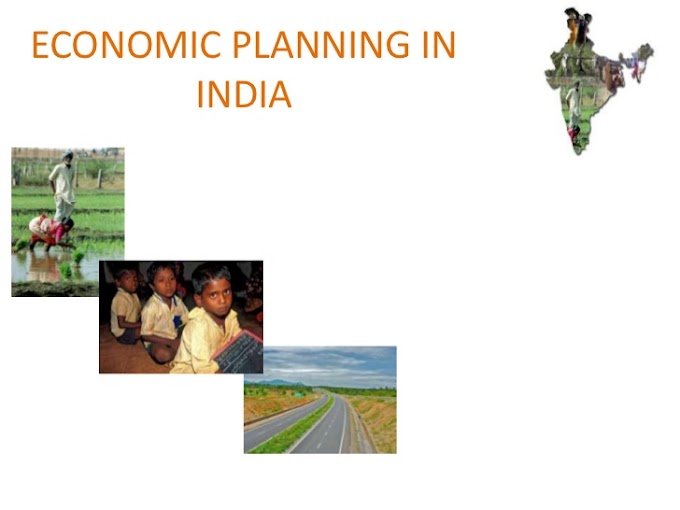Methods of Amendments in Constitution
1. Method of Simple majority:
Applies to matters related to Citizenship, abolishing or creating second chambers in the states provisions relating to Scheduled Castes and Scheduled Tribes, etc.
2. In this, the following conditions should be fulfilled :
Both the houses must pass the proposal by a majority of the total membership. By a 2/3 majority of the members present. After this, the amendment bill must also be ratified by not less than half of state legislatures. Applies to matters related to election of President and Vice – President, executive powers of union and states, subjects related to the division of legislative powers between Centre and State, matters relating to Supreme Court and High Court, representation of States in Parliament, amendment of article 368 itself, etc.
3. This method consists of first two conditions of the II method. In this, there is no need of ratification by the States.
List of Important Amendments
1. First Amendment 1951 : Added Ninth Schedule.
2. Seventh Amendment 1956 : Necessitated on account of reorganization of States on a linguistic basis.
3. Eighth Amendment 1959 : Extended special provisions for reservations of seats for SCs, STs and Anglo – Indians in Lok Sabha and Leg.
Assemblies for a period of 10 years from 1960 to 1970.
4. The Ninth Amendment 1960 : Gave effect to transfer certain territories to Pakistan following the 1958 Indo – Pak agreement.
5. The Tenth Amendment 1961 : Incorporated Dadra & Nagar Haveli as a UT.
6. Twelfth Amendment 1962 : Incorporated Goa, Daman & Diu as a UT.
7. Thirteenth Amendment 1962 : Created Nagaland as a State.
8. Fourteenth Amendment 1963 : Pondicherry, Karaikal, Mahe and Yanam, the former French territories were included in the schedule as UT of Pondicherry.
9. Eighteenth Amendment 1966 : Reorganized Punjab into Punjab, Haryana and UT of Chandigarh.
10. Twenty first Amendment 1967 : Included Sindhi as the Fifteenth Regional language.
11. Twenty second Amendment 1969 : Created a sub – state of Meghalaya within Assam.
12. Twenty third Amendment 1969 : Extended the reservation of seats for SC / ST and nomination of Anglo – Indians for a further period of 10 years (till 1 980).
13. Twenty sixth Amendment 1971 : Abolished the titles and special privileges of former rulers of princely states.
14. Twenty seventh Amendment 1971 : Established Manipur and Tripura as States and Mizoram and Arunachal Pradesh as UTs.
15. Thirty first Amendment 1973 : Increased the elective strength of LS from 525 to 545.
The upper limit of representatives of States went up from 500 to 525.
16. Thirty sixth Amendments 1975 : Made Sikkim a State.
17. Thirty eighth Amendment 1975 : Provided that the President can make a declaration of emergency, and the promulgation of ordinances by the President, Governors and the Administrative Heads of UTs would be final and could not be challenged in any court.
It also authorized the President to declare different kinds of emergencies.
18. Thirty ninth Amendment 1975 : Placed beyond challenge in courts, the election to Parliament of a person holding the office of PM or Speaker and election of the President and Prime Minister.
19. Forty second Amendment 1976 : Provided supremacy of Parliament and gave primacy to Directive Principles over Fundamental Rights. It also added 10 Fundamental Duties.
New words – Socialist, Secular and Unity and Integrity of the Nation, were added in the preamble.
20. Forty fourth Amendment 1978 : The Right to Property was deleted from Part III. Article 352 was amended to provide ‘Armed Rebellion’ as one of the circumstances for declaration of emergency.
21. Forty fifth Amendment 1985 : Extended reservation for SC / ST by another 10 years (till 1990).
22. Fifty second Amendment 1985 : Added the Tenth Schedule (regarding anti – defection).
23. Fifty third Amendment 1986 : Mizoram was made a state.
24. Fifty fifth Amendment 1986 : Conferred statehood to Arunachal Pradesh.
25. Fifty sixth Amendment 1987 : Hindi version of the Constitution of India was accepted for all purposes.
The UT of Goa, Daman and Diu was divided and Goa was made a State. Daman and Diu remained as a UT.
26. Sixty first Amendment 1989 : Reduced the voting age from 21 to 1 8 years for the LS as well as Assemblies.
27. Sixty first Amendment 1989 : Also extended reservation of seats for SC / ST till 2000 AD.
28. Seventy first Amendment 1992 : Konkani, Manipuri and Nepali were included in the VIII Schedule.
29. Seventy third Amendment 1993 : (Panchayati Raj Bill) Provided among other things Gram Sabha in Villages, constitution of panchayats at the village and other levels, direct elections to all seats in panchayats and reservation of seats for the SC and ST and fixing of tenure of 5 years for panchayats.
30. Seventy fourth Amendment 1993 : (Nagarpalika Bill) Provides for, among other things, constitution of three types of municipalities, reservation of seats in every municipality for the SC and ST, women and the backward classes.
31. Eighty second Amendment 2000 : Reinstalled the provision of reservation of SC and STs in matters related to promotion.
Besides, the qualifying marks for passing an examination for them have also been lowered.
32. Eighty fourth Amendment 2001 : Extended freeze on Lok Sabha and State Assembly seats till 2026.
33. Eighty sixth Amendment 2002 : Makes education a fundamental right for children in the age group of 6 – 14 years.
34. Eighty seventh Amendment 2003 : Made the 2001 census the basis for delimitation of constituencies of the Lower House of Parliament (Lok Sabha) and State assemblies (Vidhan Sabhas).
35. Ninety first Amendment 2003 : Amended the Anti – Defection Law and also made a provision that the number of ministers in the Central & State Govts, cannot be more than 15% of the strength of Lok Sabha & respected Vidhan Sabha.
36. Ninety second Amendment 2003 : Bodo, Maithili, Santhali and Dogri added into the VIII Schedule.
37. Ninety third Amendment 2005 : To reserve seats for socially and educationally backward classes, besides the Scheduled Castes and the Scheduled Tribes, in private unaided institutions other than those run by minorities.
The Government of India on November 30, 2007, approved the creation of a new autonomous self-governing council called Gorkha Hill Council, Darjeeling (GHC), in place of Darjeeling Gorkha Hill Council in West Bengal under the Sixth Schedule.
107th Constitutional Amendment Bill was to be introduced in the parliament to amend Articles, 244 and 332 and the Sixth Schedule of the Constitution of India.
The Constitution of India contains twelve schedules which provide details about various aspects on the con-tents of the Constitution. Sixth Schedule of the constitu-tion contains provisions to the administration of tribal areas in the States of Assam, Meghalaya, Tripura and Mizoram.
Art. 244(1) also mentions these provisions. There are nine Tribal Areas in four parts spread over the States of Assam, Meghalaya, Tripura and Mizoram which are to be administered in accordance to the Sixth Schedule of the Constitution.
Part-I:
- The North Kachar Hills District.
- The Karbi Anglong District.
Part-II:
- The Khasi Hills District.
- The Jaintia Hills District.
- The Garo Hills District.
Part IIA:
- Tripura Tribal areas District.
Part III:
- The Chakma District.
- The Mara District.
- The Lai District.
These Tribal areas are to be administered as autonomous districts. The autonomous districts are not to be outside the executive authority of the State concerned but there are provisions for the creation of District Councils and Regional Councils for the exercise of certain legislative and judicial functions. These councils are primarily representative bodies and have the power of law-making in certain specified fields such as management of a forest other than a reserved forest, inheritance of property, marriage and social customs.
The Governor of concerned state may confer upon these councils the power to try certain suits or offences. These councils have power to assess and collect land revenue and to impose certain specified taxes. Laws made by District and regional tribal councils are to be effected only on the Governor’s assent to them. The State Legislature can not make law on the matter over which the District and Regional Councils are empowered to make laws in these tribal areas unless the rel-evant District Council so directs by public notification.
In matter of application of Central and State Acts, the President of India and the Governor of concerned State is empowered to direct that an Act of parliament or of the State Legislature shall not apply to on autonomous district or shall apply only subject to exceptions or modi fixations as he may specify in his notification.
The District and Regional Council in the States of Assam, Mizoram, Meghalaya and Tripura possess Judicial Power of both civil and criminal nature which is subject to the Jurisdiction of the High Court as the Governor may time to time specify.
Though the constitution of India recognises the set-ting up of Tribal autonomous councils under Sixth Schedule of the Constitution in the States of Meghalaya, Mizoram, Tripura and Assam, but later on autonomous tribal councils in other states were also set up through the parliamentary statutes.
Darjeeling Gorkha Hill Council was formed in 1988, in the State of West Bengal through an agreement between the Central Government of India, the West Bengal Government and the Gorkha National liberation front.
Bodoland
Bodoland is an area in the north bank of Brahmaputra river in the State of Assam in the north-east region of India, by the foothills of Bhutan and Arunachal Pradesh and inhabited predominantly by Bodo language speaking ethnic group. Currently the map of Bodoland includes the Bodoland Territorial Areas District (BTAD) administered by an autonomous Bodoland Territorial Council (BTC) which was established on February 10, 2003. Area of Bodoland overlaps with the districts of Kokrajhar, Baksa, Chirang and Udalguri in the State of Assam.
Kokrajhar town serves as the headquarter or Capital of Bodoland. Since Independence, there have been regular demand for seperate Bodoland by several organisations in which some demanded seperate Statehood within the Indian Union while other demand soverein Bodoland for the Bodo People in Assam. The National Democratic Front of Bodoland (NDFB) was one such organisation.
All Bodo Students Union (ABSU) un-der the leadership of Upendranath Brahma started a movement for an independent State of Bodoland in 1987.
Bodo Liberation Tiger Force (BLTF) was a militant organisation, founded under Hagrama Mohilary in the early years of 90’s decade for the demand of a seperate State of Bodoland.
Bodoland Territorial Council under the Sixth Schedule of the constitution was established on February 10, 2003 after the conclusion of Memo-randum of Settlement with Bodo Liberation Tiger Force (BLTF), which laid down their weapons on December 6, 2003 and its chief Hagrama Mohilary was sworn in as the Chief Executive Member of the Interim BTC on December 7, 2003.
At present Bodoland Territorial Council (BTC) is a 46-member body. The area under the BTC Jurisidiction is called Bodo Territorial Autonomous District (BTAD), the council enjoys autonomy and control over certain specified matters.
The Bodo Territorial Autonomous District (BTAD) is spread over the area of 27,100 Km2, which is 35% of Assam.
Extension of Sixth Schedule provision to Bodoland was the first instance of covering non-hilly tribal area under it.





